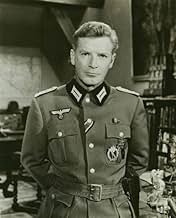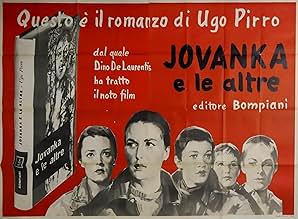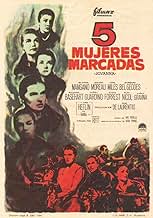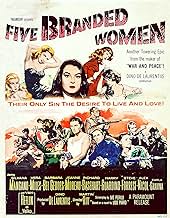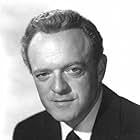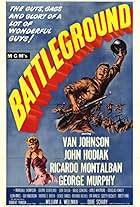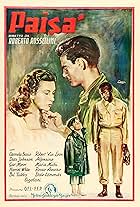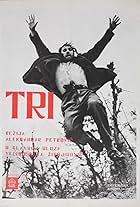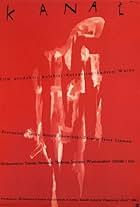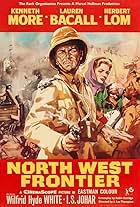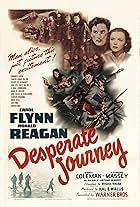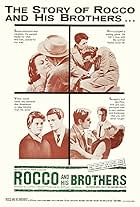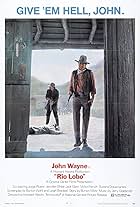Five Yugoslav women who consorted with the German occupiers are publicly humiliated and banished by the Yugoslav partisans but they take up arms to fend for themselves.Five Yugoslav women who consorted with the German occupiers are publicly humiliated and banished by the Yugoslav partisans but they take up arms to fend for themselves.Five Yugoslav women who consorted with the German occupiers are publicly humiliated and banished by the Yugoslav partisans but they take up arms to fend for themselves.
Sidney Clute
- Milan
- (as Sid Clute)
Storyline
Did you know
- TriviaVera Miles had her head shaved for her role in this film, which resulted in having to wear a wig for her role in Psycho (1960). (In fact, except for Barbara Bel Geddes, who wore a wig, all the actresses playing the title characters had their heads shaved.)
- GoofsUSA version bears an on-screen copyright notice of MCMXL which is 1940; it should be MCMLX, which is 1960.
- ConnectionsReferenced in Prisoner: Episode #1.4 (1979)
Featured review
5 Branded Women (1960)
This is a pretty amazing film right from the start, and it doesn't let up. It's a horrifying war movie with five women the victims and sometimes heroes in it. It shows the brutality of guerrilla fighters against the German army, and it shows WWII in Yugoslavia, without an American or Russian in sight. It's even well made, filmed in wide screen black and white in 1960, and it stars several absolute marquee actresses.
In many ways this is an unusual and necessary and brave movie, and the American director, Martin Ritt, had already proved his abilities with serious themes. So why does it have such a low reputation? Yes, it gets a little preachy sometimes, and it doesn't seem completely believable in a few instances of high drama. There is a good but merely good directing and editing, so the events are sometimes oddly lackluster, or maybe held at a distance and made slightly false.
But some of these complaints are only moderately true. And even more, there are themes here that are completely counterbalancing and make it worth the viewing. I don't mean for action film war scenes, but for the interior of war, and for another side to the rotten, expansive Nazi decade. This does not romanticize the situation, and in fact there is no romance to hook the viewer at all (which is no flaw, but may explain a certain lack of success with audiences). That is, it's not actually a very warm or entertaining movie. If you take at all seriously what is happening to these women you'll be horrified, and for a Hays Code era movie (though an Italian Dino de Laurentiis production, which helped), it pushes the tender envelope just enough.
To be sure, there is some really good acting here. The lead male is the unlikely leading male actor who I have grown to really like, Van Heflin. When he first appears he seems overblown, but as the movie continues he settles into his role as a weary, determined rebel leader in the mountains really well. (The one other man plays a German, Richard Baseheart, and he doesn't get enough to do, unfortunately, because his presence if important.)
The five women have all been accused of "sleeping with the enemy," loosely called fraternizing. I won't even give away the start of the movie here because it comes as a shock, but it's fair to say the women are forced into a world of their own. They don't trust each other in particular, but they gradually come to need each other to survive. Among them are some huge talents: Jeanne Moreau (between her two most famous films, "Elevator to the Gallows" and "Jules and Jim") and Barbara Bel Geddes (famous as the second woman in "Vertigo" but more amazing in the great Ophuls film, "Caught").
But it's the less known Italian actress Silvana Mangano (married to the producer) who has the leading part and who gives the most involved and critical performance--she represents the trap of young women in the war the best, wanting love, hanging on the idealism, not understanding (or refusing to accept) the brutality that comes with war beyond the front lines.
As the war moves from the town to camps in the hills (it was filmed in Italy and Austria) to run-ins with the enemy and back to town for a big finale, the drama is great. Maybe the overall theme was so huge and so laced with forbidden elements it was impossible, in 1960, to make a truly fair and wrenching movie. But Ritt has tried. If this isn't a lost masterpiece, it's still a really excellent WWII film and should be on short lists along with the usual films that also, on close watching, have their limitations.
You could easily slam the content here for what it doesn't do, for the things Ritt doesn't say through the story. (The New York Times review from 1960 does exactly that, very nicely.) In fact, the story is begging to be remade, without limitations, and we'd get a harrowing and beautiful story that really bothers the viewer directly. Instead, so far, we have a movie whose ideas bother the viewer, which is something a little more indirect.
This is a pretty amazing film right from the start, and it doesn't let up. It's a horrifying war movie with five women the victims and sometimes heroes in it. It shows the brutality of guerrilla fighters against the German army, and it shows WWII in Yugoslavia, without an American or Russian in sight. It's even well made, filmed in wide screen black and white in 1960, and it stars several absolute marquee actresses.
In many ways this is an unusual and necessary and brave movie, and the American director, Martin Ritt, had already proved his abilities with serious themes. So why does it have such a low reputation? Yes, it gets a little preachy sometimes, and it doesn't seem completely believable in a few instances of high drama. There is a good but merely good directing and editing, so the events are sometimes oddly lackluster, or maybe held at a distance and made slightly false.
But some of these complaints are only moderately true. And even more, there are themes here that are completely counterbalancing and make it worth the viewing. I don't mean for action film war scenes, but for the interior of war, and for another side to the rotten, expansive Nazi decade. This does not romanticize the situation, and in fact there is no romance to hook the viewer at all (which is no flaw, but may explain a certain lack of success with audiences). That is, it's not actually a very warm or entertaining movie. If you take at all seriously what is happening to these women you'll be horrified, and for a Hays Code era movie (though an Italian Dino de Laurentiis production, which helped), it pushes the tender envelope just enough.
To be sure, there is some really good acting here. The lead male is the unlikely leading male actor who I have grown to really like, Van Heflin. When he first appears he seems overblown, but as the movie continues he settles into his role as a weary, determined rebel leader in the mountains really well. (The one other man plays a German, Richard Baseheart, and he doesn't get enough to do, unfortunately, because his presence if important.)
The five women have all been accused of "sleeping with the enemy," loosely called fraternizing. I won't even give away the start of the movie here because it comes as a shock, but it's fair to say the women are forced into a world of their own. They don't trust each other in particular, but they gradually come to need each other to survive. Among them are some huge talents: Jeanne Moreau (between her two most famous films, "Elevator to the Gallows" and "Jules and Jim") and Barbara Bel Geddes (famous as the second woman in "Vertigo" but more amazing in the great Ophuls film, "Caught").
But it's the less known Italian actress Silvana Mangano (married to the producer) who has the leading part and who gives the most involved and critical performance--she represents the trap of young women in the war the best, wanting love, hanging on the idealism, not understanding (or refusing to accept) the brutality that comes with war beyond the front lines.
As the war moves from the town to camps in the hills (it was filmed in Italy and Austria) to run-ins with the enemy and back to town for a big finale, the drama is great. Maybe the overall theme was so huge and so laced with forbidden elements it was impossible, in 1960, to make a truly fair and wrenching movie. But Ritt has tried. If this isn't a lost masterpiece, it's still a really excellent WWII film and should be on short lists along with the usual films that also, on close watching, have their limitations.
You could easily slam the content here for what it doesn't do, for the things Ritt doesn't say through the story. (The New York Times review from 1960 does exactly that, very nicely.) In fact, the story is begging to be remade, without limitations, and we'd get a harrowing and beautiful story that really bothers the viewer directly. Instead, so far, we have a movie whose ideas bother the viewer, which is something a little more indirect.
- secondtake
- May 27, 2012
- Permalink
- How long is 5 Branded Women?Powered by Alexa
Details
- Runtime1 hour 41 minutes
- Color
Contribute to this page
Suggest an edit or add missing content


